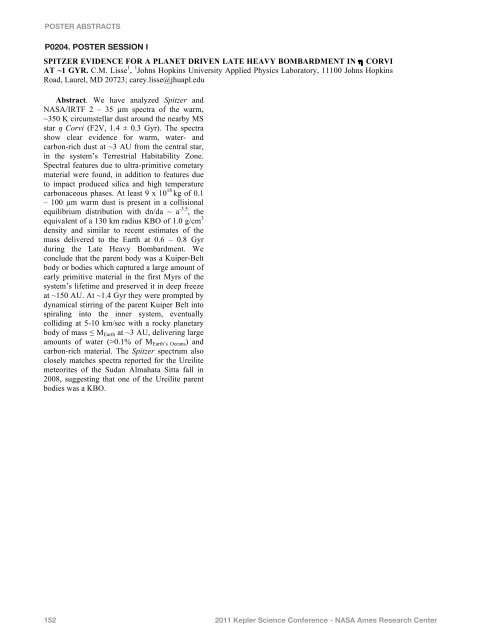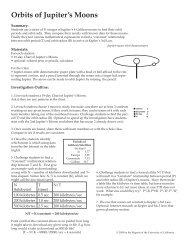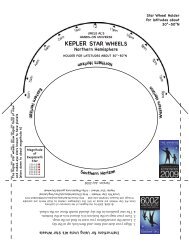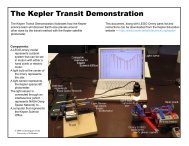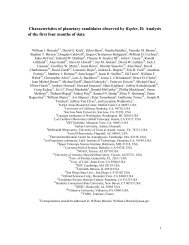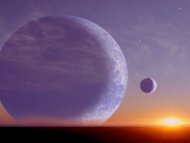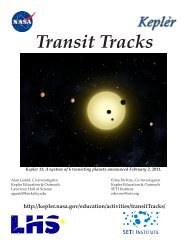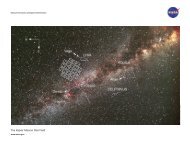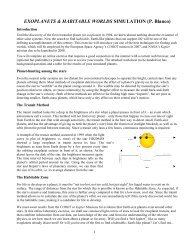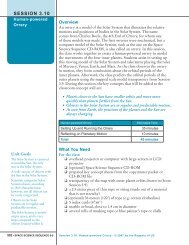Poster Abstracts - Kepler - NASA
Poster Abstracts - Kepler - NASA
Poster Abstracts - Kepler - NASA
- No tags were found...
Create successful ePaper yourself
Turn your PDF publications into a flip-book with our unique Google optimized e-Paper software.
POSTER ABSTRACTSP0204. POSTER SESSION ISPITZER EVIDENCE FOR A PLANET DRIVEN LATE HEAVY BOMBARDMENT IN η CORVIAT ~1 GYR. C.M. Lisse 1 , 1 Johns Hopkins University Applied Physics Laboratory, 11100 Johns HopkinsRoad, Laurel, MD 20723; carey.lisse@jhuapl.eduAbstract. We have analyzed Spitzer and<strong>NASA</strong>/IRTF 2 – 35 µm spectra of the warm,~350 K circumstellar dust around the nearby MSstar η Corvi (F2V, 1.4 ± 0.3 Gyr). The spectrashow clear evidence for warm, water- andcarbon-rich dust at ~3 AU from the central star,in the system’s Terrestrial Habitability Zone.Spectral features due to ultra-primitive cometarymaterial were found, in addition to features dueto impact produced silica and high temperaturecarbonaceous phases. At least 9 x 10 18 kg of 0.1– 100 µm warm dust is present in a collisionalequilibrium distribution with dn/da ~ a -3.5 , theequivalent of a 130 km radius KBO of 1.0 g/cm 3density and similar to recent estimates of themass delivered to the Earth at 0.6 – 0.8 Gyrduring the Late Heavy Bombardment. Weconclude that the parent body was a Kuiper-Beltbody or bodies which captured a large amount ofearly primitive material in the first Myrs of thesystem’s lifetime and preserved it in deep freezeat ~150 AU. At ~1.4 Gyr they were prompted bydynamical stirring of the parent Kuiper Belt intospiraling into the inner system, eventuallycolliding at 5-10 km/sec with a rocky planetarybody of mass ≤ M Earth at ~3 AU, delivering largeamounts of water (>0.1% of M Earth’s Oceans ) andcarbon-rich material. The Spitzer spectrum alsoclosely matches spectra reported for the Ureilitemeteorites of the Sudan Almahata Sitta fall in2008, suggesting that one of the Ureilite parentbodies was a KBO.1522011 <strong>Kepler</strong> Science Conference - <strong>NASA</strong> Ames Research Center


